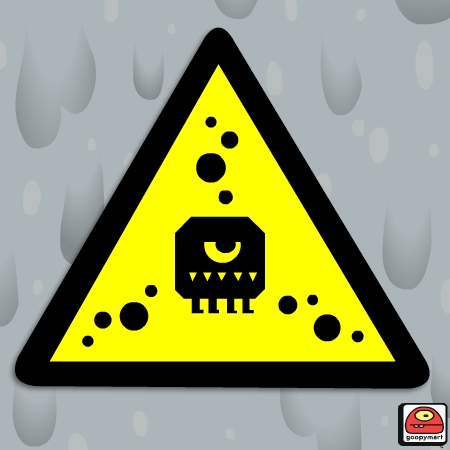
I love a good dystopian novel where technology has gotten out of hand and changed some futuristic society into a place none of us would want to live – think Brave New World, 1984, Cat’s Cradle, or Oryx and Crake. I think these fictional stories are great thought experiments, revealing the importance of science done ethically and the public understanding enough science to make educated decisions regarding technology and public policy.

A dystopian end-of-the-world scenario involving self-replicating nanoscale robots, termed “grey goo,” was popularized in the late 1980’s. I can’t think of any scientist who would support this particular scenario, but it is still important to think carefully about any unique safety issues related to nanoparticles, if there are any. In fact, there has been a lot of discussion in scientific, legal, and ethics fields about whether or not nanoparticles should be regulated any differently than any other chemical or material. The scientific questions about the safety of nanoparticles draw largely on the fact that nanoparticles are often used because they have new chemical or physical properties. Their size alone is not really grounds for worry, as humans have been exposed to natural and human-derived nanoparticles, distinct from the engineered nanoparticles of interest here, for a very long time. To date, there is no evidence for nanoparticles being toxic in brand new ways. Toxicity effects seen for any particular nanoparticle so far have precedent with bits of matter that are either smaller or larger. Of course, we may still find new modes of toxicity… that’s why there’s significant research underway to create nanoparticle design rules for optimal safety.
 Many people will tell you that the European Union is ahead of the United States when it comes to considerations of nanoparticle safety. In fact, EU products containing nanoparticles must include labeling as such in the product ingredient list, empowering consumers to decide if they want to buy a product that contains nanoparticles – unfortunately, this label likely conveys the message that nanoparticle ingredients are somehow more dangerous than the ingredients usually in the product. This “danger” has certainly not been demonstrated; in fact, the product had to pass through the same safety testing required for its non-nanoparticle-containing counterparts. This labeling requirement is similar to the EU’s earlier requirement that products containing genetically modified (GM) organisms also be labeled. While the issues are certainly different for genetically modified organisms and nanoparticles, the likely impacts on consumer acceptance of the product and public perception of the scientific area are the same. People will purchase less of the product, perhaps stifling development of new, enhanced products that use nanoscale materials, and the public will be fearful of nanotechnology. Especially for a scientific field just coming into its own in many ways, this could be disastrous. I think we, as a society, would be making a grave mistake to stop pursuing the potential of nanoscale materials. Labeling implies that there are known dangers, and the scientific reality is always murkier than that. For the public and lawmakers to fully appreciate the murkiness of nano-toxicity concerns as well as the incredible potential benefits of nanoscale materials, it is important for scientists like us to keep researching and to clearly communicate with those groups (by writing blogs like this one). However, labeling a sunscreen as “nano” will do nothing to help us avoid our already-unlikely destruction by self-replicating nanoscale robots or any other nanotechnology phenomenon.
Many people will tell you that the European Union is ahead of the United States when it comes to considerations of nanoparticle safety. In fact, EU products containing nanoparticles must include labeling as such in the product ingredient list, empowering consumers to decide if they want to buy a product that contains nanoparticles – unfortunately, this label likely conveys the message that nanoparticle ingredients are somehow more dangerous than the ingredients usually in the product. This “danger” has certainly not been demonstrated; in fact, the product had to pass through the same safety testing required for its non-nanoparticle-containing counterparts. This labeling requirement is similar to the EU’s earlier requirement that products containing genetically modified (GM) organisms also be labeled. While the issues are certainly different for genetically modified organisms and nanoparticles, the likely impacts on consumer acceptance of the product and public perception of the scientific area are the same. People will purchase less of the product, perhaps stifling development of new, enhanced products that use nanoscale materials, and the public will be fearful of nanotechnology. Especially for a scientific field just coming into its own in many ways, this could be disastrous. I think we, as a society, would be making a grave mistake to stop pursuing the potential of nanoscale materials. Labeling implies that there are known dangers, and the scientific reality is always murkier than that. For the public and lawmakers to fully appreciate the murkiness of nano-toxicity concerns as well as the incredible potential benefits of nanoscale materials, it is important for scientists like us to keep researching and to clearly communicate with those groups (by writing blogs like this one). However, labeling a sunscreen as “nano” will do nothing to help us avoid our already-unlikely destruction by self-replicating nanoscale robots or any other nanotechnology phenomenon.
